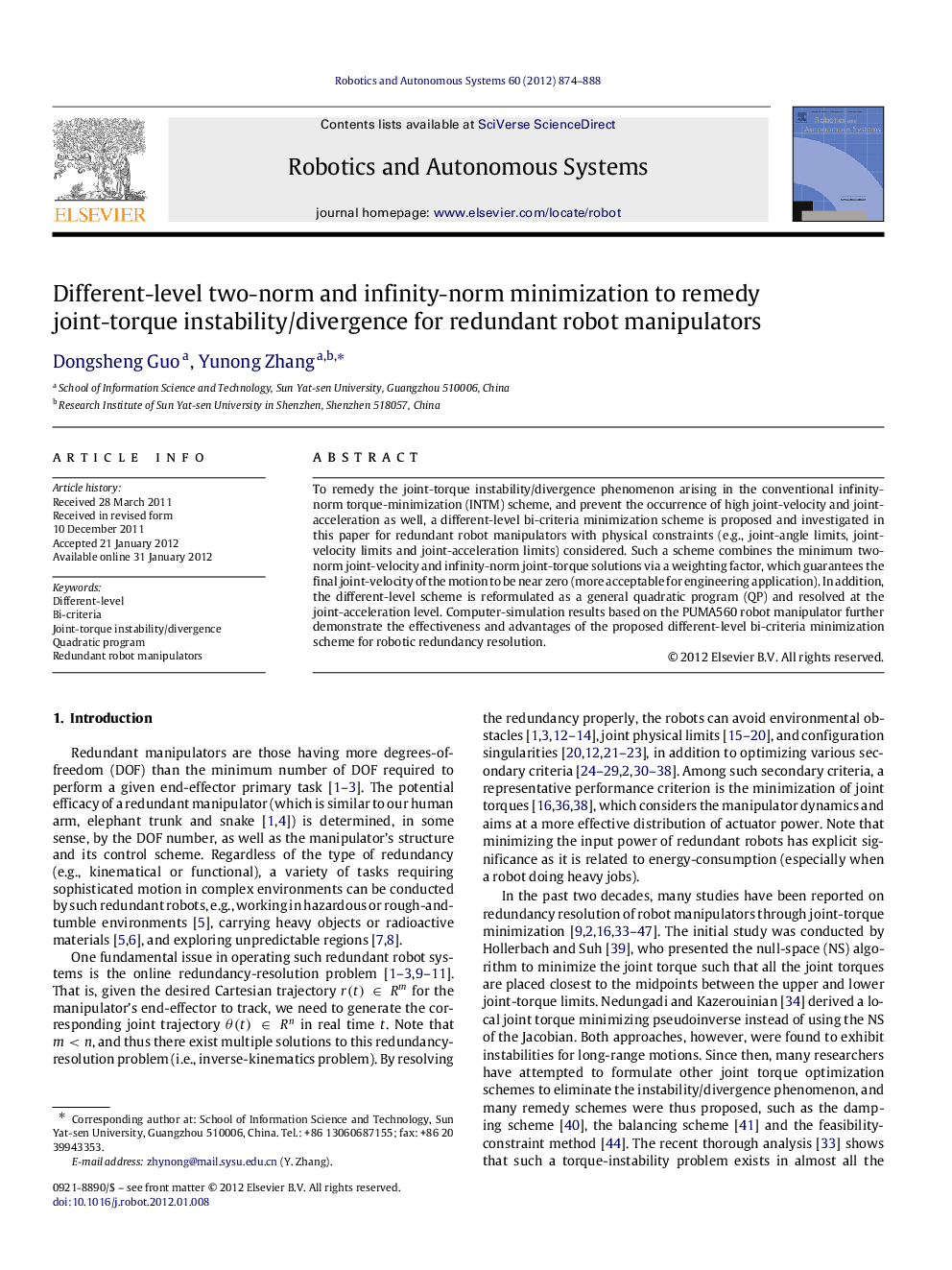| Article ID | Journal | Published Year | Pages | File Type |
|---|---|---|---|---|
| 413441 | Robotics and Autonomous Systems | 2012 | 15 Pages |
To remedy the joint-torque instability/divergence phenomenon arising in the conventional infinity-norm torque-minimization (INTM) scheme, and prevent the occurrence of high joint-velocity and joint-acceleration as well, a different-level bi-criteria minimization scheme is proposed and investigated in this paper for redundant robot manipulators with physical constraints (e.g., joint-angle limits, joint-velocity limits and joint-acceleration limits) considered. Such a scheme combines the minimum two-norm joint-velocity and infinity-norm joint-torque solutions via a weighting factor, which guarantees the final joint-velocity of the motion to be near zero (more acceptable for engineering application). In addition, the different-level scheme is reformulated as a general quadratic program (QP) and resolved at the joint-acceleration level. Computer-simulation results based on the PUMA560 robot manipulator further demonstrate the effectiveness and advantages of the proposed different-level bi-criteria minimization scheme for robotic redundancy resolution.
► A different-level minimization scheme is proposed for redundant manipulators. ► Different-level minimization is unified for the first time into one QP to solve. ► The instability/divergence arising in INTM scheme is remedied. ► The occurrence of high joint-velocity/acceleration is prevented. ► The final joint-velocity of robot motion is guaranteed to be near zero.
